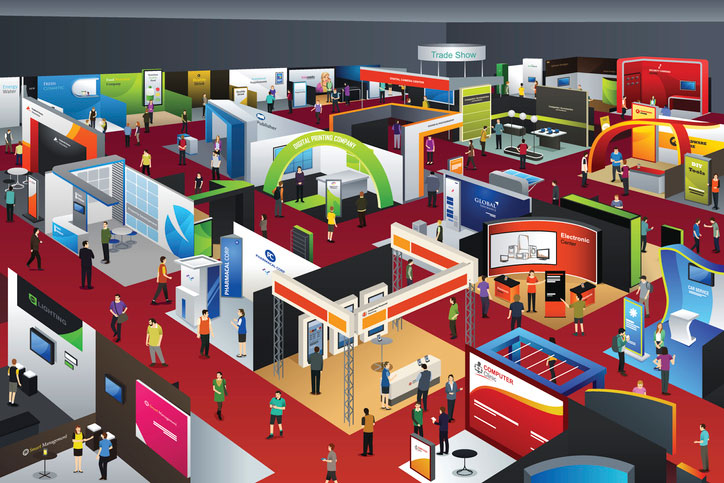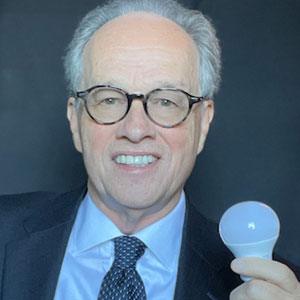An electronics trade show hints at our own transformation
By Mark Lien
 Our lighting community is transforming. Even the market transformation programs are transforming. The DOE SSL Program, Energy Star and the DLC that shaped our industry are repositioning themselves to maintain relevance. That is what successful programs need to do in this evolving marketplace.
Our lighting community is transforming. Even the market transformation programs are transforming. The DOE SSL Program, Energy Star and the DLC that shaped our industry are repositioning themselves to maintain relevance. That is what successful programs need to do in this evolving marketplace.
Energy savings and the resultant shift to LEDs drove our industry for the past 15 years. The low-hanging fruit, however, is mostly gone and additional energy savings now come with increased complexities, at increased costs and often with unacceptable ROIs. LED products have matured to market acceptance at existing price and performance levels. Lighting controls are no longer focused on ROI or energy savings but rather who can control the most disparate devices in a home or municipal application. Trending today are changes occurring with non-energy related benefits of lighting.
These market shifts, including lighting’s integration into smart cities and homes, and quantifying the health impact on life forms including humans, animals and plants for horticulture, are influencing new requirements in existing market transformation programs. The first to successfully market new technologies potentially commands a higher profit and name recognition. Nowhere is that battle for first place more evident than at the annual Consumer Electronics Show (CES). Some 4,400 exhibitors competed for market position by demonstrating the advantages of their applications of new tech. Some products appear to precede the science to substantiate their claims or inferences.
Note that the Consumer Electronics Show is aimed at manufacturers and media not users. It is not open to the public and the 170,000 attendees apply for acceptance. Energy savings was not a generally promoted feature of products at the show. CES 2020 did feature dozens of companies struggling for dominance in our smart homes and cities. That big fight was over control, specifically who will make the killer product to unify disparate smart products and centralize the operations. Lighting appears in all of these corporate visions for future buildings and city development. Sadly, their lighting is typically referred to generically as a commodity like thermostats, heating, etc. The inference is that our products are so similar as to be interchangeable. Do you want to control your drapes and door locks and lighting with your phone or other central controller?
AT CES 2020, VOICE ASSISTANTS were almost table stakes. We have accepted and are growing accustomed to Alexa or Google Home or even Siri, although we use them for a fraction of their capabilities. Most of the competing control visions integrate voice activation into their system infrastructure uniting the rest of the interconnected devices.
While the signage showing what devices can be centrally controlled at CES shows lighting generically, when asked, some of these companies revealed their alliances. A Samsung rep dug out the names of over 100 lighting-related companies that are working as partners on their building control system. One lighting manufacturer can partner with many control companies and as the fight for dominance progresses the safe strategy is to have multiple partners since some will fail and others merge. Survival of our lighting species may depend on prolific procreation with multiple partners. The risk is that the requirements from the dominant system integrator will become more demanding on their partners to assure consistent performance and maintenance. That tends to homogenize and threaten the diversity of lighting product design. It could be argued that the commoditization has already progressed to the point where most lighting product types look similar. With lighting the struggle for control is all about controls. Whoever controls the operation of lighting products will eventually influence the design and production of the lights.
Most of the companies showing lighting products at CES 2020 were not our familiar lighting brands. OSRAM participated with a diverse approach and Signify used their space to roll out their smart control system. The large electronics companies are assimilating lighting into their catalogs. Samsung divides their website into three categories: Lighting, Automotive and Display & Mobile. They may initially source lighting products before disintermediation drives them to manufacture themselves. Samsung’s annual sales exceed $70 billion and they seek further growth. This is accomplished by expanding their offerings and market channels. Assimilating lighting into their offerings and processes can help with that goal.
PART OF THE FUTURE of lighting this decade will be with some small artisanal innovators. This trend occurs concurrent with the transition for most existing lighting manufacturers into commodity suppliers. Exceptions for potential light and health and horticultural products could occur if the industry unites to substantiate the effect and value of lighting for these applications. Once we can speak with authority about health benefits, this will present a profitable lifeline to current manufacturers seeking an alternative to selling commodities. Unless, and more likely, the larger companies usurping our industry will resolve these issues. Under lighting on their website, Samsung leads with Circadian, then Horticulture and Tunable Light. Lighting brand recognition outside of our lighting community is nonexistent so brand loyalty is no impediment to Samsung, LG, Sharp, Sony Panasonic, Google, Apple or others entering the lighting community.
Shuji Nakamura’s SLD Laser was at CES 2020 touting their application for Li-Fi. Lasers for Li-Fi are potentially 140 times faster (for transmitting data) than Signify’s current Li-Fi offerings. Li-Fi has serious momentum and will be a significant part of future lighting introductions. The unprecedented collection of increasing amounts of data/information occurring now forces the question of how to extract wisdom from this flow. Data will be communicated through Li-Fi by our luminaires and sources as lighting is integrated into the electrical infrastructure of our built environment.
Our lighting community is transitioning from an energy focus with organizations now broadening their interests to include other aspects of light sources and luminaires. We transformed from the least efficient appliance in the built environment to maximizing the efficacy of light sources in about 15 years. The pace of change will not slow even as some products, like LEDs, mature because not only are related technologies in exponential growth mode, the convergence of technologies is accelerating. IBM’s CES booth featured their Quantum Computer. It promises to be revolutionary, forcing a reevaluation of damn near everything we think we are certain of, the ultimate market transformation.

